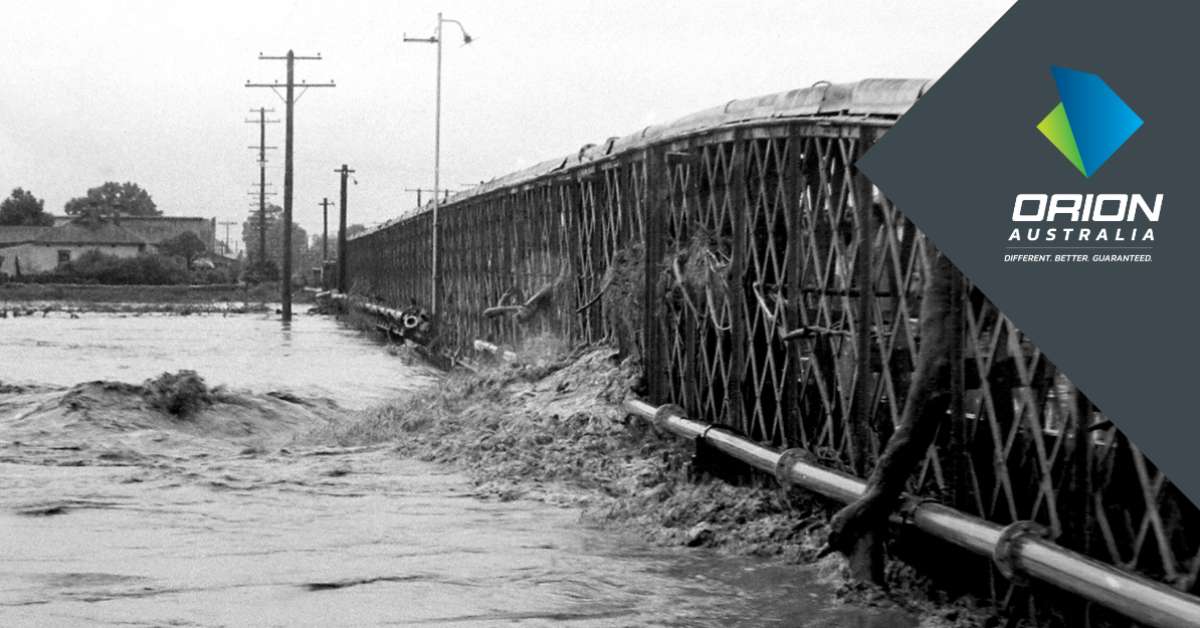28 March 2024
World Water Series – Water, Water Everywhere – 1955 Hunter Valley Flood
The Hunter River meanders through the Hunter Valley in New South Wales, and it is an area notorious for its history of flooding.

This article delves into the catastrophic floods of 1955, exploring the events leading up to this tragedy and the subsequent efforts to aid the affected communities in this sombre chapter in Australian history.
In February 1955, the townships in the Hunter Valley region carried on as usual amidst five months of rainfall – a familiar backdrop for the locals at the time. What followed caught residents off guard nothing could prepare them for about what was to happen. Relentless downpours around the 23rd of February unleased a deluge amounting to a years’ worth of rainfall in less than single week. The water catchment systems proved inadequate.
With little warning, residents and animals scrambled for survival, seeking refuge, clinging to any available structure, or escaping to find a dry landing. Rescue services worked tirelessly to reach those stranded or those at risk of being swept away. The floodwaters surged, reaching heights up to three meters, transforming a once-quiet townships scenes into turbulent nightmares. Tragically powerlines submerged in the water leading to further catastrophe.
The deluge engulfed the townships, turning residential streets and fertile fields into vast expanses of raging floodwaters. Brave individuals swam through muddy torrents to escape, while willing helpers risked their lives for others, while volunteer surf boat crew were braving the raging floods, any vehicle that could be navigated the inundated streets were used for rescue efforts, supported by air rescue services and government and private resources rescuing and delivering much needed supplies such as medical aid, food, blankets, and clothing to those displaced. Residents worked tirelessly, regardless of whether they had lost their homes, to protect what remained.
In Gilgandra, a third of the buildings suffered damage, with water breaching structures to such an extent that two semi-trailers were swept into a building. The waters covered a vast area over 96,000 square kilometers, leaving behind a trail of destruction and despair.
The Toll on Human Life and Livelihoods
Due to the floods 14 lives were lost, 300 people were injured, 58 homes were washed away and more than 100 had to be destroyed. 40,000 people were evacuated from more than 40 towns, with more than 5000 homes flooded leaving families displaced. Thousands of livestock perished, bridges, roads, railways, and telephone lines sustained extensive damage and millions of pounds worth of crops were destroyed. The overall cost of the damage, amounting to approximately 1.3 billion dollars in today’s terms.
In the aftermath, communities faced the daunting task of rebuilding, with many volunteers stepping in to assist. Buildings either underwent repair or demolition, and the landscape was marred by mud and debris, reaching heights up to four feet. To compound matters, homes and belongings were looted, requiring residents to stand guard over what little they had left.
Reflecting on the scale of devastation and loss during this time and over the years there has been much discussion on flood mitigation and the construction of levees. In recent years, a flood mitigation scheme has provided benefits for over 250,000 people within the Hunter Valley Region, offering hope for resilience against any future weather calamities.
Images of the 1955 Flood in Maitland (Hunter River), original negatives by Jim Lucey. The original negatives and digitised images held by Special Collections at the University of Newcastle Library, NSW, Australia.


